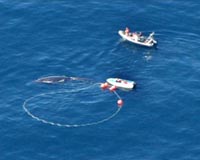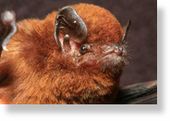Steve Fielding recently asked the Obama administration to reassure him on the science of man-made global warming. When the administration proved unhelpful, Mr. Fielding decided to vote against climate-change legislation.
If you haven't heard of this politician, it's because he's a member of the Australian Senate. As the U.S. House of Representatives prepares to pass a climate-change bill, the Australian Parliament is preparing to kill its own country's carbon-emissions scheme. Why? A growing number of Australian politicians, scientists and citizens once again doubt the science of human-caused global warming.

© Associated PressSteve Fielding
Among the many reasons President Barack Obama and the Democratic majority are so intent on quickly jamming a cap-and-trade system through Congress is because the global warming tide is again shifting. It turns out Al Gore and the United Nations (with an assist from the media), did a little too vociferous a job smearing anyone who disagreed with them as "deniers." The backlash has brought the scientific debate roaring back to life in Australia, Europe, Japan and even, if less reported, the U.S.
In April, the Polish Academy of Sciences published a document challenging man-made global warming. In the Czech Republic, where President Vaclav Klaus remains a leading skeptic, today only 11% of the population believes humans play a role. In France, President Nicolas Sarkozy wants to tap Claude Allegre to lead the country's new ministry of industry and innovation. Twenty years ago Mr. Allegre was among the first to trill about man-made global warming, but the geochemist has since recanted. New Zealand last year elected a new government, which immediately suspended the country's weeks-old cap-and-trade program.
The number of skeptics, far from shrinking, is swelling. Oklahoma Sen. Jim Inhofe now counts more than 700 scientists who disagree with the U.N. -- 13 times the number who authored the U.N.'s 2007 climate summary for policymakers. Joanne Simpson, the world's first woman to receive a Ph.D. in meteorology, expressed relief upon her retirement last year that she was finally free to speak "frankly" of her nonbelief. Dr. Kiminori Itoh, a Japanese environmental physical chemist who contributed to a U.N. climate report, dubs man-made warming "the worst scientific scandal in history." Norway's Ivar Giaever, Nobel Prize winner for physics, decries it as the "new religion." A group of 54 noted physicists, led by Princeton's Will Happer, is demanding the American Physical Society revise its position that the science is settled. (Both
Nature and
Science magazines
have refused to run the physicists' open letter.)











Comment: How will the governments and mass media control the insurrection when the lie of global warming is revealed by reality?
What psychological weapon will they unleash next? Pandemic? War?